An underground film is a film that is out of the mainstream either in its style, genre or financing.

Scorpio Rising is a 1963 American experimental short film shot, edited, co-written and directed by Kenneth Anger, and starring Bruce Byron as Scorpio. Loosely structured around a prominent soundtrack of 1960s pop music, it follows a group of bikers preparing for a night out.

Adolfas Mekas was a Lithuanian-born American filmmaker, writer, director, editor, actor and educator. With his brother Jonas Mekas, he founded the magazine Film Culture, as well as the Film-Makers' Cooperative and was associated with George Maciunas and the Fluxus art movement at its beginning. He made several short films, culminating in the feature Hallelujah the Hills in 1963, which was played at the Cannes Film Festival of that year and is now considered a classic of American film.
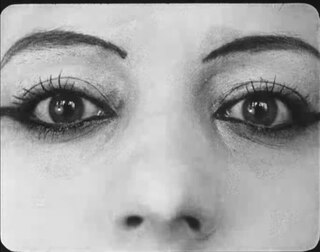
Experimental film or avant-garde cinema is a mode of filmmaking that rigorously re-evaluates cinematic conventions and explores non-narrative forms or alternatives to traditional narratives or methods of working. Many experimental films, particularly early ones, relate to arts in other disciplines: painting, dance, literature and poetry, or arise from research and development of new technical resources.
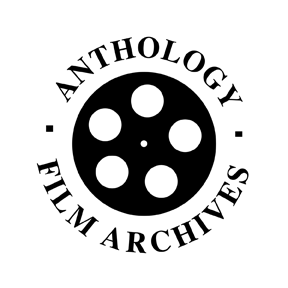
Anthology Film Archives is an international center for the preservation, study, and exhibition of film and video, with a particular focus on independent, experimental, and avant-garde cinema. The film archive and theater is located at 32 Second Avenue on the southeast corner of East 2nd Street, in a New York City historic district in the East Village neighborhood of Manhattan.
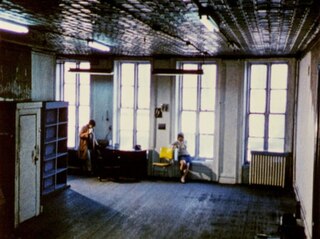
Wavelength is a 1967 experimental film by Canadian artist Michael Snow. Considered a landmark of avant-garde cinema, it was filmed over one week in December 1966 and edited in 1967, and is an example of what film theorist P. Adams Sitney describes as "structural film", calling Snow "the dean of structural filmmakers."

Flaming Creatures is a 1963 American experimental film directed by Jack Smith. The film follows an ensemble of drag performers through several disconnected vignettes, including a lipstick commercial, an orgy, and an earthquake. It was shot on a rooftop on the Lower East Side on a very low budget of only $300, with a soundtrack from Smith's roommate Tony Conrad. It premiered April 29, 1963 at the Bleecker Street Cinema in Greenwich Village.
Gregory J. Markopoulos was a Greek-American experimental filmmaker.
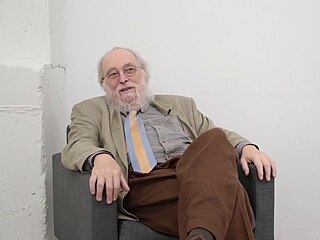
P. Adams Sitney, is a historian of American avant-garde cinema. He is known as the author of Visionary Film, one of the first books on the history of experimental film in the United States.
The Flicker is a 1966 American experimental film by Tony Conrad. The film consists of only 5 different frames: a warning frame, two title frames, a black frame, and a white frame. It changes the rate at which it switches between black and white frames to produce stroboscopic effects.
Cosmic Ray is a 1962 American experimental short film directed by Bruce Conner. With both found footage and original material, it features images of countdown leader, a nude woman dancing, a Mickey Mouse cartoon, and military exercises. It is soundtracked by a performance of Ray Charles's "What'd I Say" and has been recognized by some critics as one of the first music videos.

Storm de Hirsch (1912–2000) was an American poet and filmmaker. She was a key figure in the New York avant-garde film scene of the 1960s, and one of the founding members of the Film-Makers' Cooperative. Although often overlooked by historians, in recent years she has been recognized as a pioneer of underground cinema.

Robert Carlton Breer was an American experimental filmmaker, painter, and sculptor.
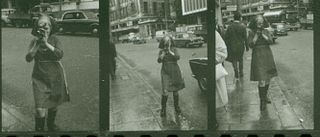
Barbara Rubin (1945–1980) was an American filmmaker and performance artist. She is best known for her landmark 1963 underground film Christmas on Earth.
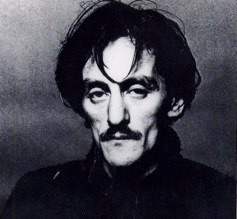
Jerry Jofen (1925–1993) was an American painter, collagist, and experimental filmmaker.
Anticipation of the Night is a 1958 American avant-garde film directed by Stan Brakhage. It was a breakthrough in the development of the lyrical style Brakhage used in his later films.
Adebar is a 1957 Austrian avant-garde short film directed by Peter Kubelka. It is the first entry in Kubelka's trilogy of metrical films, followed by Schwechater and Arnulf Rainer. Adebar is the first film to be edited entirely according to a mathematical rhythmic strategy.
The Way to Shadow Garden is a 1955 American experimental film directed by Stan Brakhage.
Blue Moses is a 1962 American experimental film directed by Stan Brakhage, starring Robert Benson.
The Illiac Passion is a 1968 American avant-garde film directed by Gregory Markopoulos.












